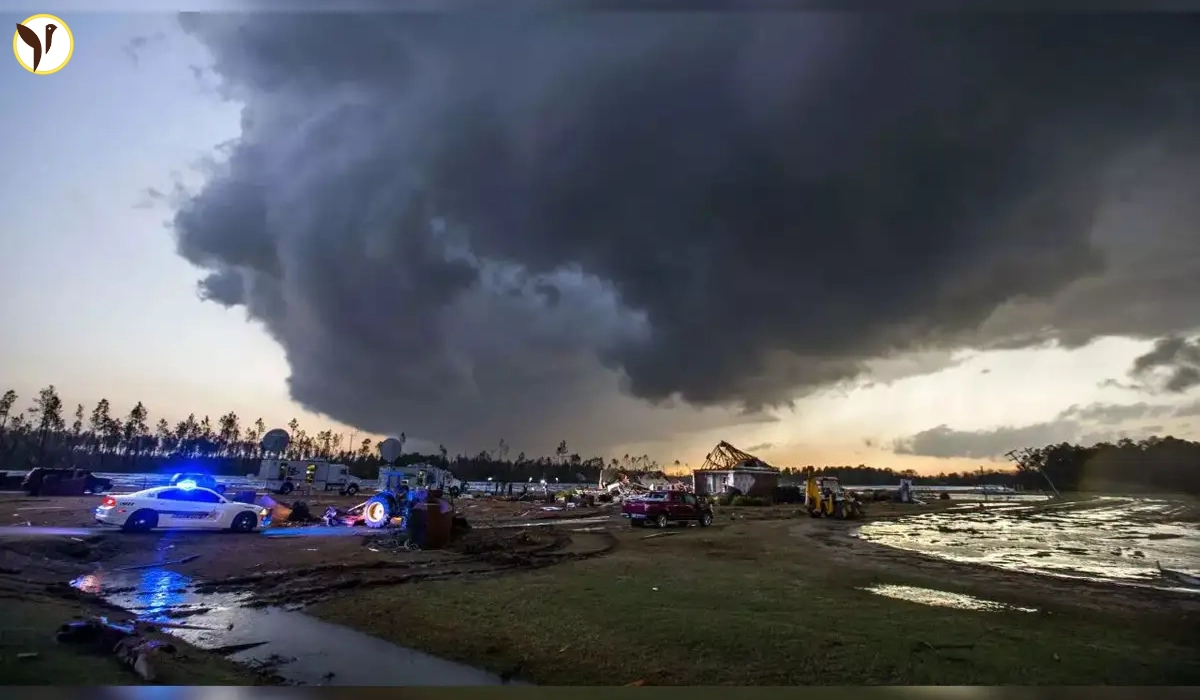A Devastating Tornado Beats St. Louis
On May 16, 2025, it swept the St. Louis metropolitan area, leaving marks of destruction, heartache and resistance. The violent storms have affected several countries in the Midwest and Ohio Valley and were part of a larger storm outbreak that was affected by millions of people. As the houses are torn apart, trees are uprooted and lost, and the cities now face a long road to recovery.
Rapid Onset and Overwhelming Impact
The sky quickly darkened, and within minutes the roaring wind and difficult sirens gave room for confusion. One of the most affected areas was Clayton, a lively suburb where residents experienced a funnel crowdspiral running through the neighborhood, dispersing tiled rubs and autumn structures along his way. Many have described the event as suddenly, overwhelming. The entire block was not recognised by the roof that was demolished in the house. For some, the only warnings came in a few before the storm, highlighting the horrific speed it developed.
Heroic Rescue Efforts Amidst Devastation
The emergency crew worked tirelessly all night, pulling people trapped from the tiled bleed of the fallen building. The damaged structure included local businesses, churches and family homes, each of whom spoke about what was lost. With emotional rescue, the team was able to save individuals who, tragically, not everyone survived, are trapped under the historic church abandonment. During the crisis, cheerers, volunteers and medical staff were celebrated as heroes for their fast and selfless actions.
Challenges in Recovery and Support
Dispersed power lines and damaged substations made repair efforts difficult, especially in the most affected areas. Public transport was suspended in several areas due to the removal of streets and streets, as many residents were stuck or relied on emergency services. Local governments quickly set up accommodation and subsidies centres for displaced people. These animal shelters have become important lifelines, providing food, water, medical aid and temporary spaces for those who have lost everything in the blink of an eye.
Ongoing Severe Weather Threat
Meteorologists have been carefully monitoring heavy storm systems affecting the entire Midwest. The tornado clock and warnings were exhibited in several states, including Illinois, Indiana and Ohio, with anticipated warnings of a lasting threat over the next few days. Current weather patterns driven by unstable atmospheric conditions have increased the possibility of large hail, harmful winds and additional tornadoes. Experts ask residents of endangered areas to remain vigilant, follow weather updates and present plans.
Community Response and Resilience
Volunteers across the city appeared in large numbers to support cleanup tasks, distribute supplies and provide poor emotional support. Donations flow and local businesses appear to secure food, accommodation and financial relief. Authorities are imposing first blocks in some areas to protect public safety and enable emergency situations ongoing. Damage assessments are ongoing and recovery efforts are expected to last for weeks, if not months.
Preparing for Future Challenges
If extreme weather events become more frequent and more intensive, local governments must remain prepared. Local and federal authorities are working to clarify the public about improving warning systems, strengthening infrastructure and how to respond to disasters. The future streets will be a challenge for St. Louis, but the city's spirit is strong. Even in the darkest moments there was hope, given the stories of tragedy, courage, compassion and determination.
sources:https://www.foxweather.com/weather-news/severe-weather-outbreak-midwest-ohio-valley-tornado-threat
https://www.forbes.com/sites/marshallshepherd/2025/05/16/st-louis-tornadoes-highlight-weather-services-life-saving-mission/
https://www.hindustantimes.com/world-news/us-news/st-louis-tornado-massive-twister-spotted-in-clayton-other-missouri-cities-warned-video-101747425341399.html


/content/stories/thumb/thumb6921b3b9ee9020.28287588.webp)
/content/stories/thumb/thumb69206b5b4225d5.60253160.webp)
/content/stories/thumb/thumb69201416357a31.06626959.webp)
/content/stories/thumb/thumb69200979647f42.07470218.webp)
/content/stories/thumb/thumb692000a6ca8d82.37160793.webp)


